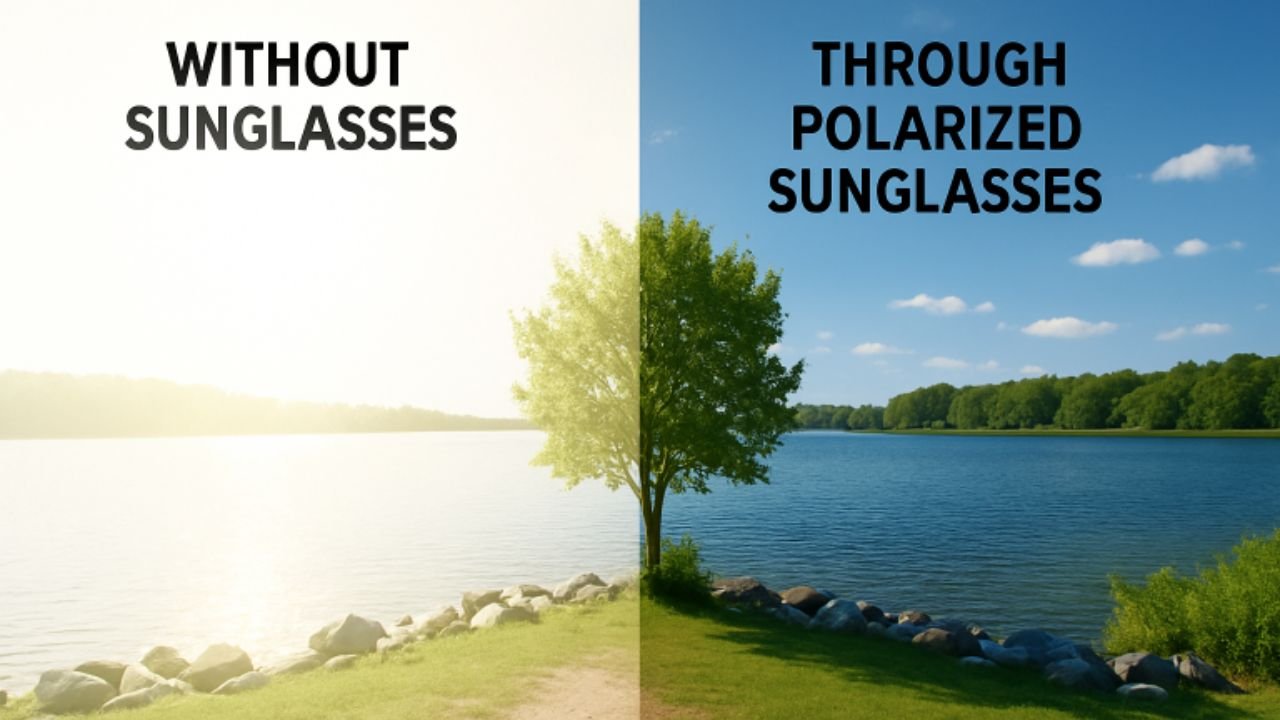Key Takeaways
- Polarized lenses significantly reduce glare from reflective surfaces, improving visual comfort.
- They enhance color perception and contrast, making outdoor scenes more vivid.
- These lenses provide essential UV protection, safeguarding eye health during prolonged sun exposure.
- Polarized eyewear is particularly beneficial for driving, fishing, and snow sports.
Table of Contents
- Understanding Polarized Lenses
- Benefits of Polarized Lenses
- Applications in Outdoor Activities
- Choosing the Right Polarized Lenses
Exploring the outdoors is exciting, but harsh sunlight glare can easily turn a fun adventure into an uncomfortable experience. For those wondering what are polarized sunglasses, they’re specialized lenses designed to reduce intense reflections and improve visual clarity. By managing glare from surfaces like water, snow, or pavement, polarized sunglasses make every outdoor activity—whether on the waves, slopes, or open road—more straightforward, safer, and far more enjoyable.
When you wear polarized sunglasses, you instantly notice the difference—colors appear richer, edges sharper, and your eyes feel less fatigued. This isn’t just a matter of comfort; it’s about enhancing safety, visual performance, and long-term eye health for everyone from outdoor enthusiasts to professional athletes. Understanding the science behind polarized lenses and their unique advantages can help you choose eyewear that elevates outdoor experiences.
Understanding Polarized Lenses
Polarized lenses are engineered with a unique chemical filter to block intense, horizontally reflected light. This glare typically bounces off flat surfaces like water, snow, or asphalt, making it difficult for your eyes to distinguish shapes, changes in terrain, or hidden hazards. Polarized lenses optimize what you see by letting only valid vertical light pass through, providing exceptional visual clarity precisely when needed.
Wearing polarized sunglasses is not just about a sharper, more comfortable view. Modern polarized lenses also come with coatings that filter out 100% of harmful UVA and UVB radiation—reducing your risk of cataracts and other sun-induced eye conditions. With the right pair, you’re protecting your vision and overall eye health.
Benefits of Polarized Lenses
- Glare Reduction: Sunlight reflecting off shiny surfaces can create blinding glare, hindering your ability to see obstacles and read subtle details in your path. Polarized lenses act as a barrier, drastically reducing this effect for clearer sight and safer movement.
- Enhanced Color Perception: Polarized lenses’ filtering effect improves contrast, making blues more vibrant, greens deeper, and the overall image crisper. This enhancement not only beautifies your surroundings but can also help distinguish key objects or changes in terrain.
- UV Protection: Quality polarized lenses block 100% of UVA and UVB rays, crucial for preventing cumulative eye damage and associated vision issues. Long-term exposure to UV rays is a major contributor to the development of conditions like macular degeneration and photokeratitis.
- Reduced Eye Strain: By controlling incoming light and clarifying your vision, polarized sunglasses lower the workload on your eye muscles, reducing fatigue, squinting, and headaches—making them ideal for all-day wear.
Applications in Outdoor Activities
People who frequently venture outdoors stand to gain the most from polarized sunglasses. Each activity presents its own visual challenges that polarized lenses can help overcome:
- Driving: Glare from wet or shiny roads and reflections off car hoods can impair your ability to react quickly. Polarized lenses boost your view of the road, traffic signals, and surroundings, contributing to safer, more relaxed driving.
- Fishing and Water Sports: Surfaces of lakes, rivers, or oceans reflect sunlight intensely, hiding obstacles below. Polarized sunglasses cut through this glare, enabling anglers and water sports enthusiasts to see beneath the surface and better judge their environment.
- Snow Sports: Bright sunlight bouncing off snowfields can be dazzling and hazardous. Polarized lenses sharpen the contrast, clarify small dips or ridges in the snow, and reduce the risk of missing potential hazards while skiing or snowboarding.
- Hiking and Active Outdoors: Trails often run through areas with changing light and patchy glare from water, rocks, or sand. Polarized lenses help you better spot wildlife, trail markers, or shifting terrain, minimizing missteps and enhancing enjoyment.
Choosing the Right Polarized Lenses
Lens Color and Purpose
Different tints are tailored to distinct purposes. Gray polarized lenses offer true color perception and remain neutral for every activity. Brown or amber lenses bring out details by enhancing contrast, making them the top choice for fishing, driving, or sports in fluctuating light. Green lenses strike a balance between contrast and color fidelity and are suitable for varied environments.
Frame Fit & Durability
Choose frames that feel secure yet comfortable for extended wear and physical activity. Wraparound styles prevent peripheral light from leaking, while lightweight, flexible materials like polycarbonate withstand rough conditions and frequent use.
Quality Features
Scratch-resistant coatings and water-repellent layers increase lens longevity and usability. Look for products labeled with UV400 or 100% UV protection to guarantee comprehensive defense against solar radiation.
Conclusion
Polarized sunglasses are more than just a stylish accessory—they are a high-performance tool for anyone who values visual clarity, comfort, and eye health in the outdoors. By thoughtfully choosing the right pair, you can transform your day-to-day outdoor moments into sharper, safer, and more memorable experiences, whatever your favorite activity. Invest in quality polarized eyewear to unlock a world of vivid detail and enjoy long-term protection for your vision.
You May Also Read: When and Why to Update Your Special Needs Plan











